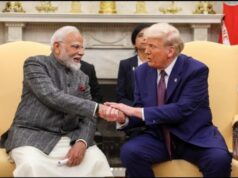NEW DELHI: As India moves into occupying the space of an IT superpower, the ability of the Information and communications technology (ICT) industry to provide the requisite technologies reliably for civilian and military requirements needs to be significantly enhanced. The issue is complicated by the fact that India has limited presence at the high-stakes table of Digital Standards. The Standards are a major stumbling block in India’s quest for technological sovereignty and we appear to be abdicating our responsibility to secure our IT and digital industry as well as IT usage. This situation has deep implications for our economy and defence preparedness.
Given the lack of control over technological layers, the Indian economy and defence institutions will be challenged to protect the nation from cyber warfare. More important, military hardware itself could be subject to intrusions and control by adversaries, thanks to increased “intelligence” of the equipment.
Tactical initiatives on the ground need to be backed up with complex supply chains that are in turn increasingly dependent on critical information infrastructure such as railways signalling, telecommunications network etc. The entire economy and military infrastructure could be threatened by non-authenticated ICT components in the information networks.
The financial infrastructure of the country could be brought down, impacting the ability of the military to sustain conventional warfare.
The impact on Network Centric Warfare is also obvious.
Thus, it is imperative that we move towards a digital ecosystem which provides greater control over digital infrastructure.
More important, imagine the impact on the economy in general, and defence logistics in particular, if the “.in” Top Level Domain (TLD) is deleted from the Internet root servers. Such a move would cripple the economy and severely restrict the ability of the Indian military to respond to a strategic situation. It’s important to mention here that India has minimal control, if not no control, over the root servers. In other words, India has no technological sovereignty over the theatre where cyber warfare plays out.
Thus, an obvious way forward for India as a nation is to build the ecosystem of technological sovereignty which will strengthen its capability.
There is also an increased threat to technological sovereignty from digital monopolies that control vast amounts of data pertaining to the country, the citizens and businesses. It is important that this threat be addressed. This is especially true of digital utilities that are widespread, are ubiquitously used and that benefit from network effect and hence become natural monopolies. Since these digital utilities operate in an over-the-top manner, where they ride on regulated utilities but the apps themselves are unregulated, they pose a significant threat to India’s security and internal law and order.
Digital monopolies that originate from nations that see India as an adversary are especially worrisome. Among the top 20 apps used in India, one can easily identify TikTok, Likee, UC Browser, Helo, VMate and SHAREit as apps that are present in most phones in India, that could easily be used to influence opinion or for propaganda in a manner that hurts India.
The impact of polices, regulatory frameworks and standards on technology sovereignty is critical for the growth of the digital economy as well as the larger economy linked to the digital economy. The digital economy permeates all aspects of modern society, from agriculture to education to health and industry. Therefore, it is imperative to have an appropriate policy framework for technology sovereignty. India would need to gain technologies that are not necessarily frontier technologies but are critical from the perspective of technological sovereignty.
(The writer is a noted author and expert in technology driven government transformation and President, Centre for Digital Economy Policy Research. Views expressed in this article are personal.)





